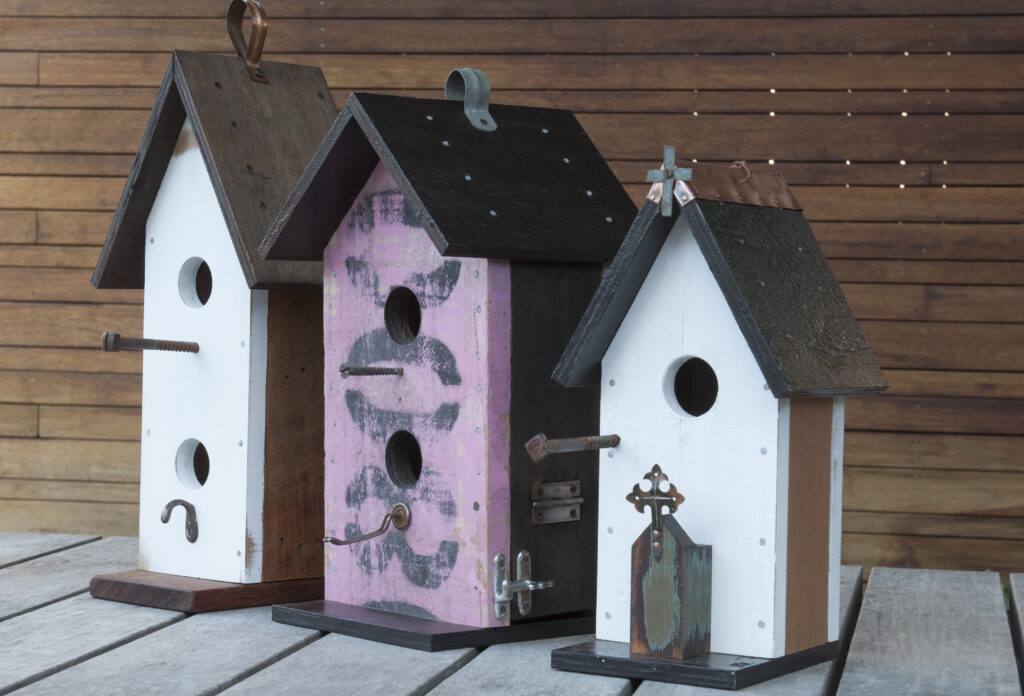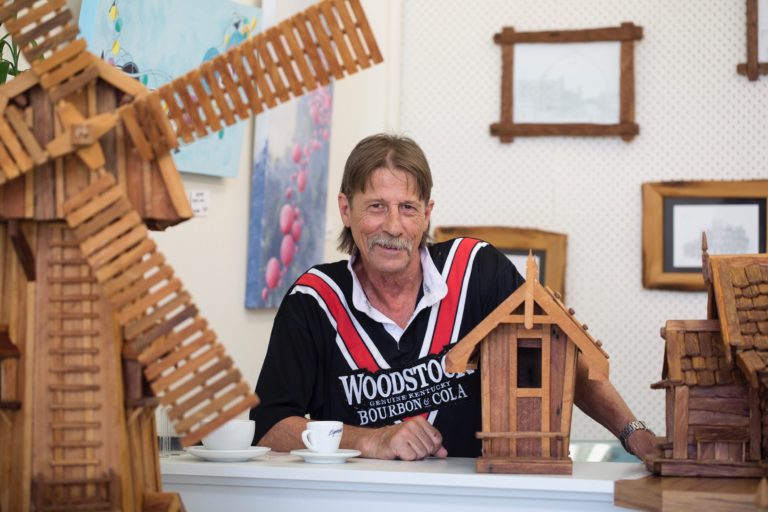A passion for building bird houses has led to the opportunity to help a good cause
By Sue Allison
Photographs: Juliet Nicholas
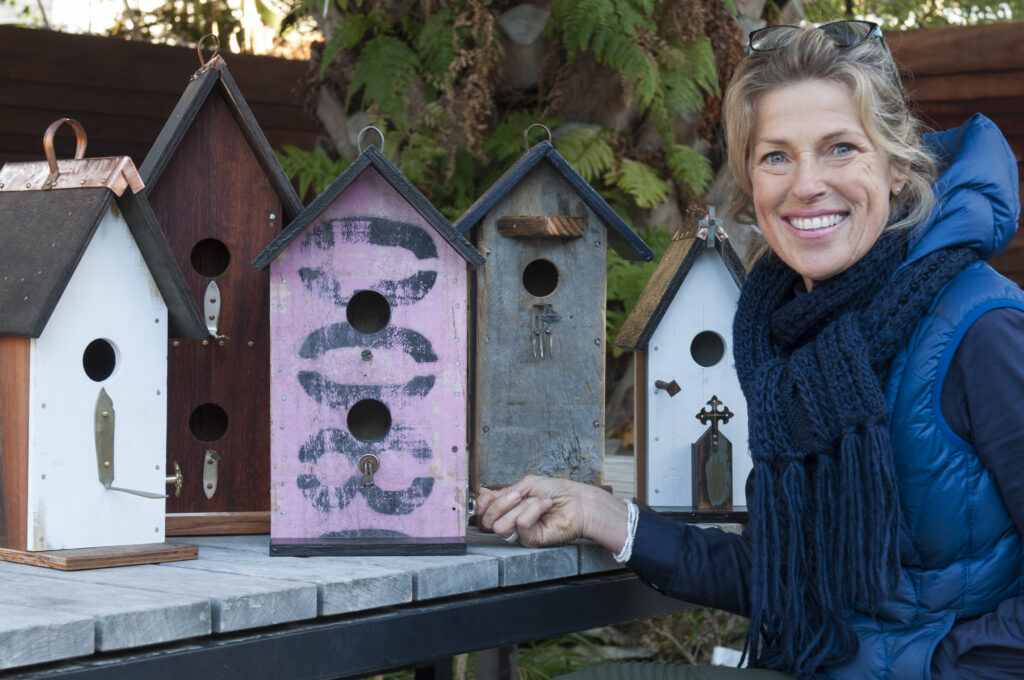
Megan Collings’ birdhouses tick a lot of boxes. Her quirky shelters are not only well-constructed and aesthetically pleasing, but they are indirectly providing food and shelter for more thanher feathered friends. Megan gives the proceeds from every birdhouseshe sells to an orphanage in Nepal.
“The earthquake in Nepal hit me hard after our own quakes in Christchurch,” says Megan. “I couldn’t get it out of my head, there were so many thousands affected. I wanted to go over and help but felt I was just a nobody. I’m not a nurse, I’m not a doctor. I love making my birdhouses and thought it was a way I could create and sell for a good cause.”
Megan makes her birdhouses down at the Redcliffs Community Shed. She needed a piece of wood cut and happened to spot the Shed while out driving. When she approached them, they bent their rules and cut it for her. Before long she and her husband Tim Clemence had signed up as two ardent new members to work on her project. Tim is now on the Shed’s committee and the couple go to the Shed together on Wednesday nights. “It’s our date night. We’re so happy here.It’s our home away from home,” says Megan, who also goes to the Shed during daytime opening hours.
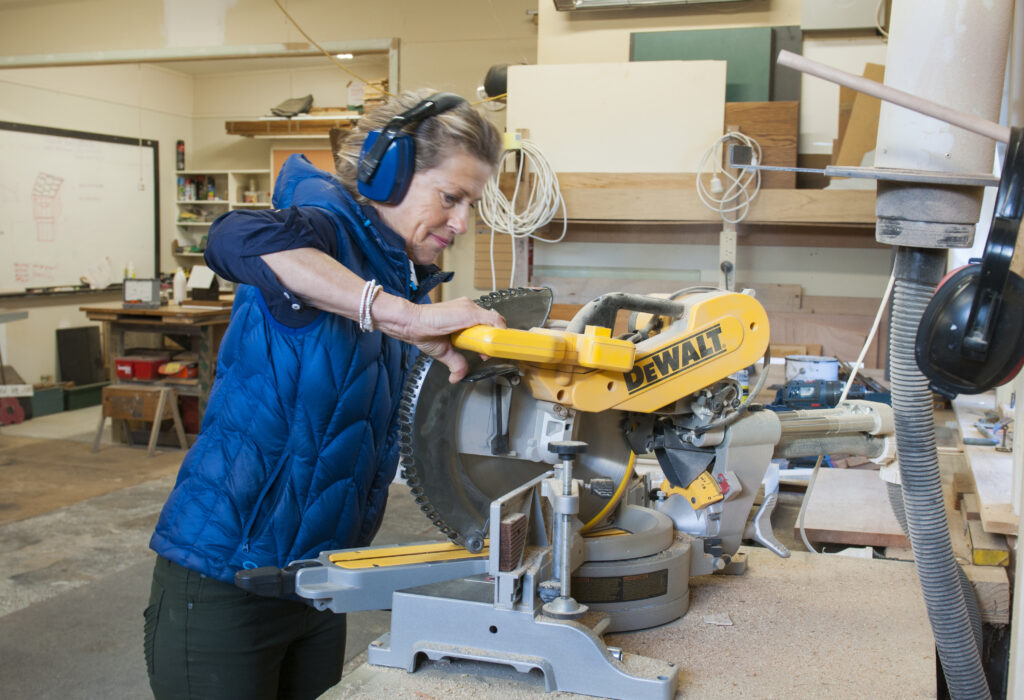
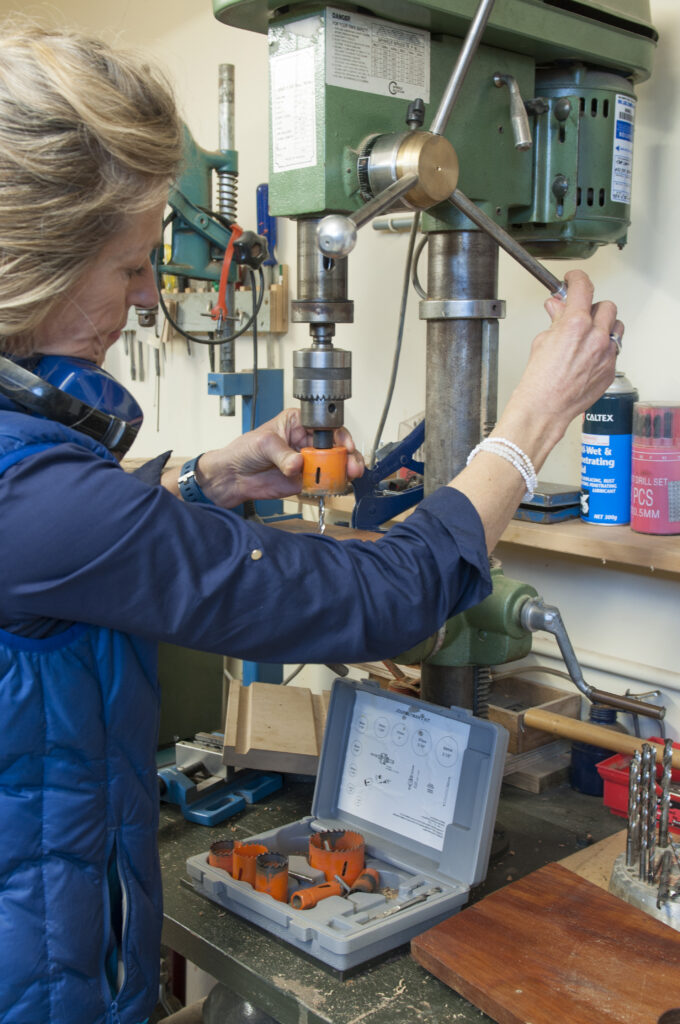
“He always encouraged us as children. I’m surprised we still have all our fingers”
Plan B
The plan had been to build a shed in their own backyard in the neighbouring suburb of Sumner, but by the time they had added a loft and bathroom it had morphed into something more than a simple workshop. “It was so smart that we turned it into a sleep-out,” she says.Besides, they soon realised it was going to cost a fortune to fit it out with equipment. “We can come down here where there are great tools and machinery for just $50 a year for the two of us.” Not to mention the experienced woodworkers on hand to show her the ropes.
Megan studied interior design and still does some consulting as a kitchen designer. She is also a proficient mosaic artist, with some of her work commissioned for a Christchurch installation in the 1990s.
She is no stranger to sheds, having spent much of her childhood pottering in her father’s workshop. “He was a roofer by trade, but loved his woodwork. He always encouraged us as children. I’m surprised we still have all our fingers.” Now 92, he sometimes comes down to watch his daughter at work in the Redcliffs workshop. “He’s green with envy at all the equipment we have access to down here.”
Megan’s first major woodworking project was a true labour of love and one from which many would have recoiled. When her mother, only in her 50s, was dying from cancer, Megan and her two young brothers decided they would make her coffin. “It felt like the right thing to do. It didn’t feel right to buy one,” she says. They constructed the casket from recycled rimu, using old doorhandles from a second-hand shop as carry handles. All three were pall-bearers. “It was way too big and really heavy, but it was so special. I’m going to make my own, too. It might [take the shape] of a birdhouse,” she muses.
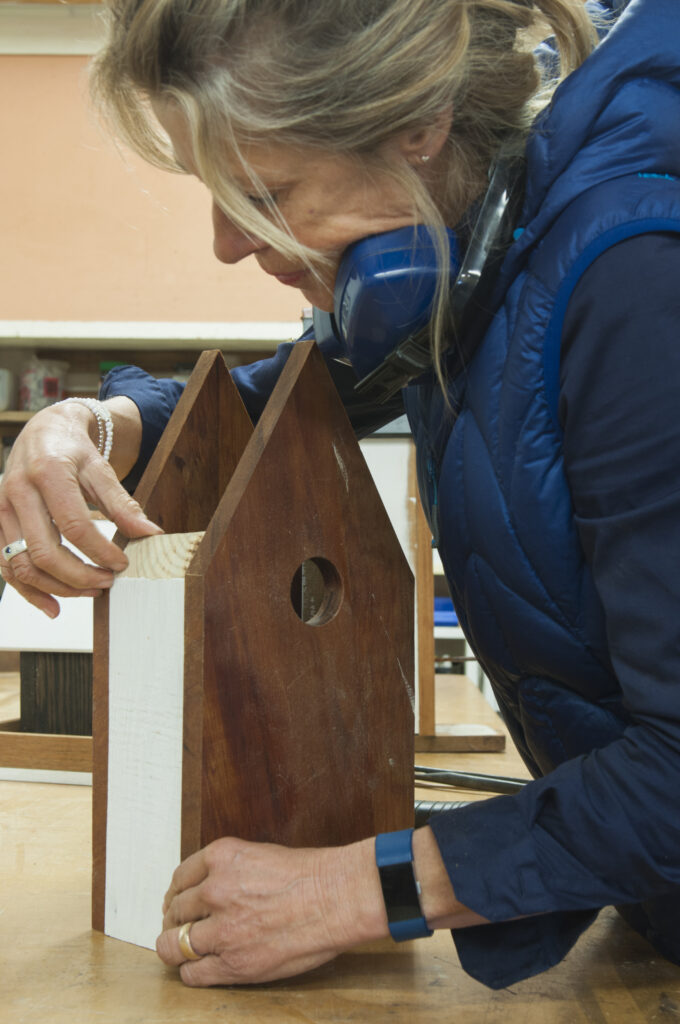
Recycled materials
Megan makes her birdhouses out of any recycled materials she can lay her hands on. Old floorboards are ideal for the walls of the tall, elegant structures and several have been fashioned from a pink plank she found washed up on the beach while takingthe 20-minute walk from her house to the Shed. She prepares the surfaces with the Shed’s Makita bench saw and belt sander, leaving some imperfections to add to their charm.
“I try to make them as solid as possible so they will last,” says Megan, and the roofer’s daughter always tops them off with copper flashing. “It looks good and keeps them water-tight.”She fits a hinged door on one side for access, always using copper or galvanised nails with brass screws for decorative detail.
The hanging hooks and perches are made from an array of materials, mostly bits and pieces found in her husband’s hoard of “things that might come in handy”. Tim, a creative up-cycler who makes one-off lights and lamps, is a collector from way back. He has boxes of bolts and brass fittings, hinges, strips of copper and paraphernalia perfect for perches. Some of Megan’s latest bijou dwellings have bent silver butter knives as roosts.
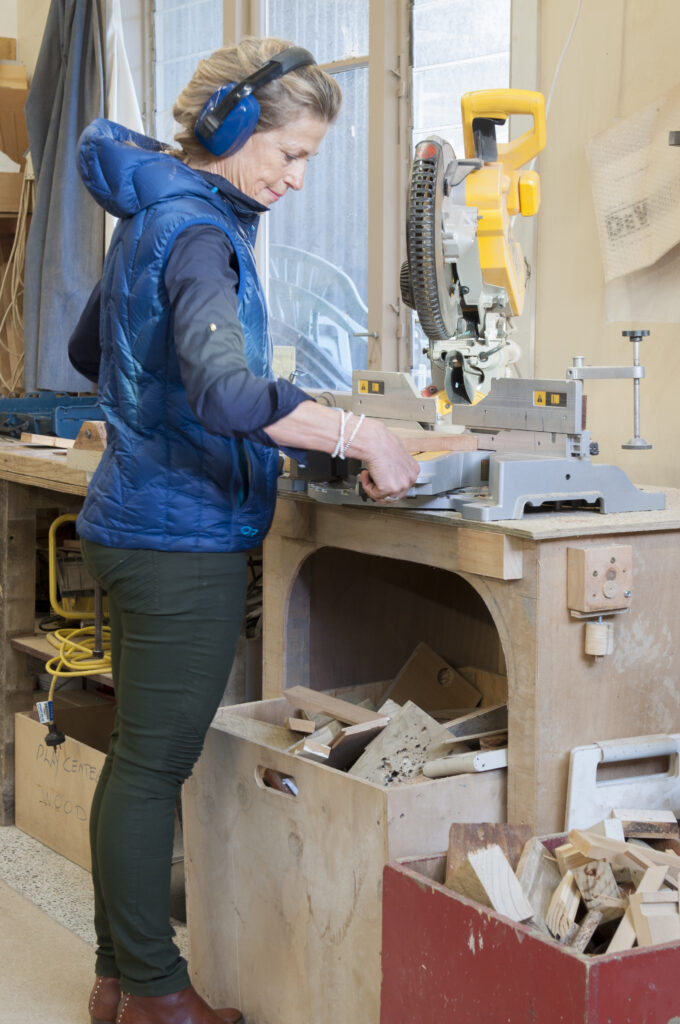
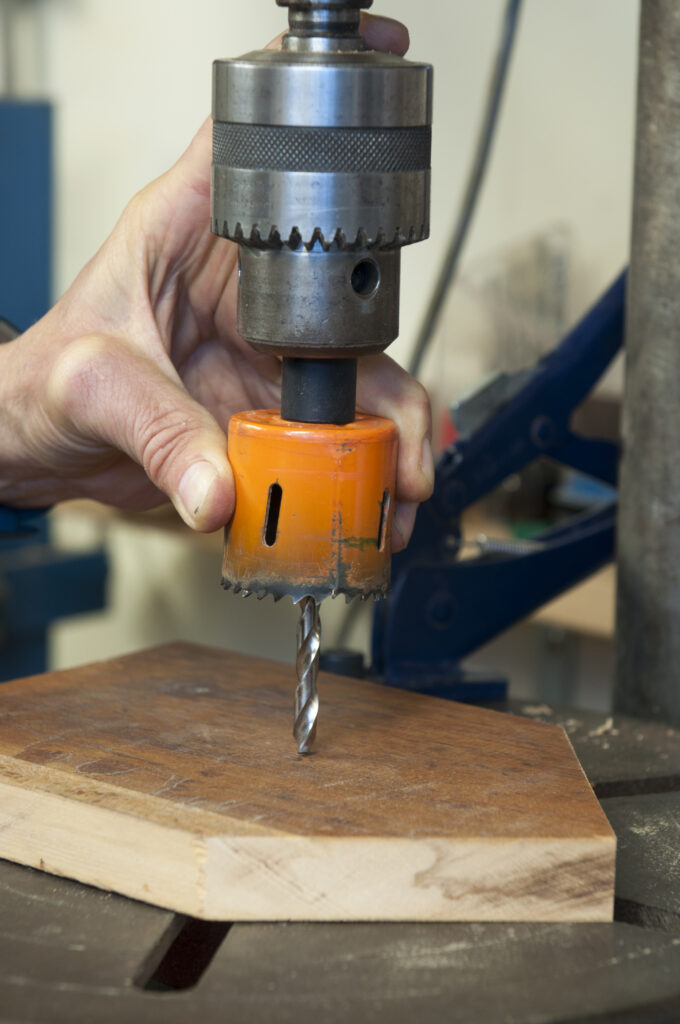
“Megan makes her birdhouses out of any recycled materials she can lay her hands on”
Favourite tools
One of the most useful discoveries in Tim’s trove was a rusty set of picture framing braces for holding mitred corners. He cleaned them up, painted them with rust-killer, and Megan uses them to hold right-angled joints while the glue sets.She uses exterior adhesives, including a mystery mix in a bottle she was given by pioneer Christchurch surfboard maker Denis Quane, who used to make his boards in the Shed in the days before it was a community venture.
Megan’s favourite tool in the Redcliffs Shed is the DeWalt mitre drop saw. “It’s brilliant. I just set the angle (usually 60˚) for the roof and the saw does the rest.”
The Warrior hole saw comes a close second in terms of making the job easy. She simply selects a circular attachment for the birdhouse entrance and fits the “cookie cutter” to the drill press.
Megan likes her houses to have a natural, worn look, leaving most partially painted or with a raw finish, but she paints the roofs with semi-gloss enamel for weather-protection and coats the rest with linseed oil.
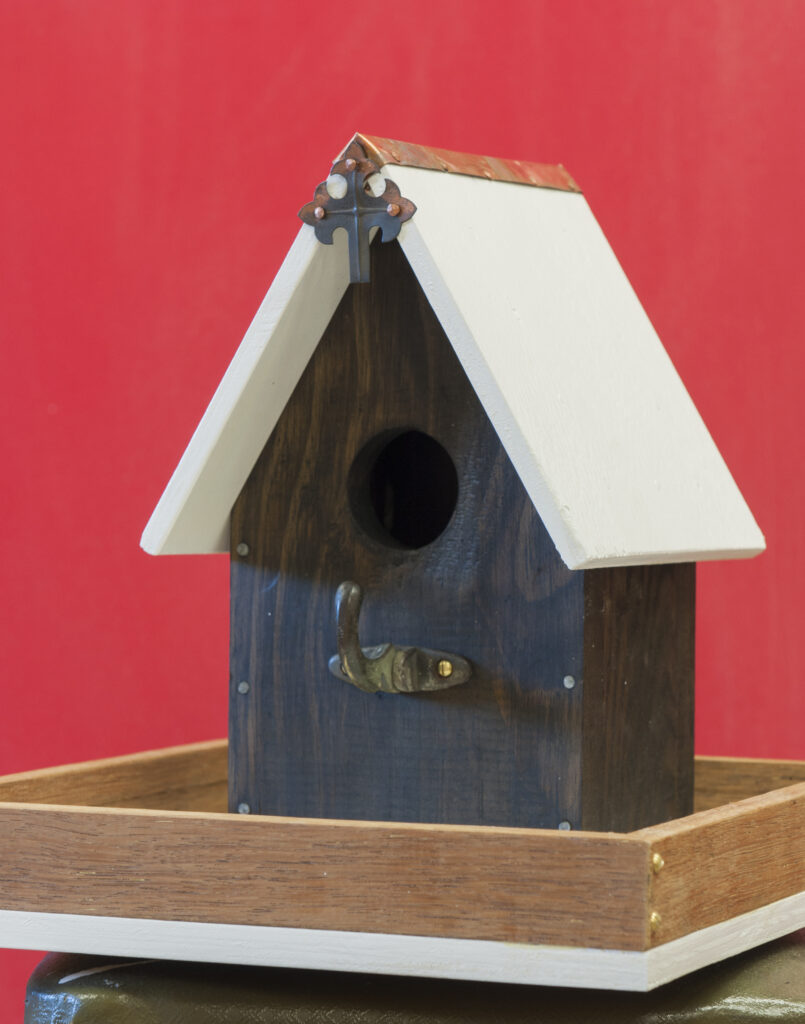
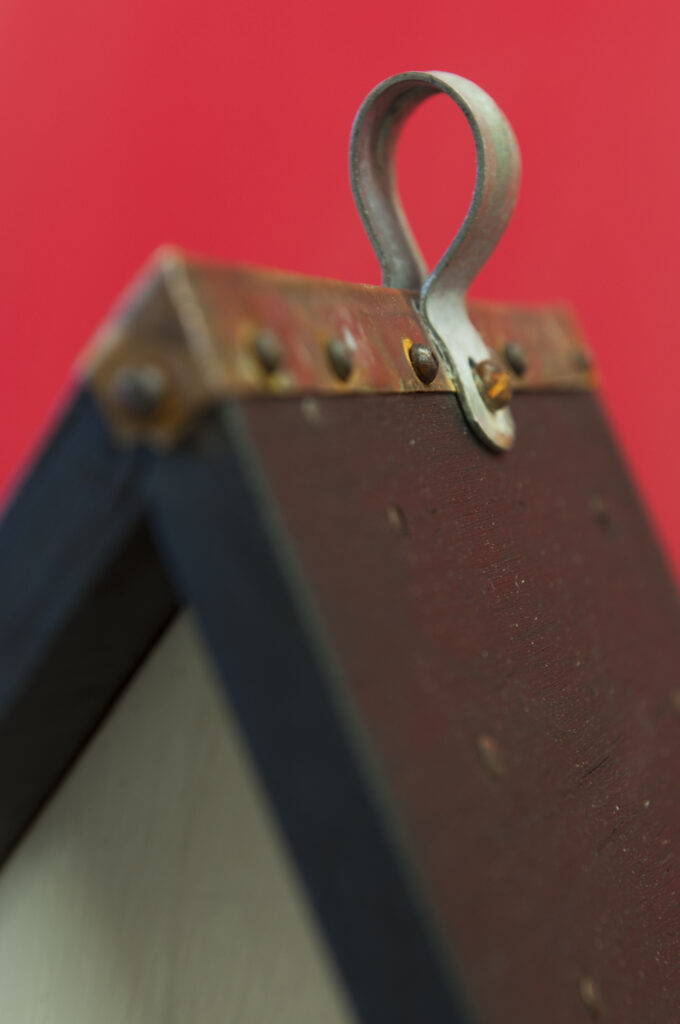
Silver lining
Redcliffs and its neighbouring seaside suburbs took a hammering in the February 2011 earthquake. Images flashed around national and international screens of houses precariously hanging from clifftops and the local school miraculously still standing in front of piles of red rubble from the crumbled cliffs behind.
With many properties red-zoned and handymen having no access to their gear, a couple of locals hit on the idea of starting a men’s shed. With funding and a building available, they soon had one up and running. But before long, word got around and women in the community wanted to come along too, particularly arts and crafts groups needing woodworking tools. And so came a name change and the gender-neutral “Community Shed” was born.
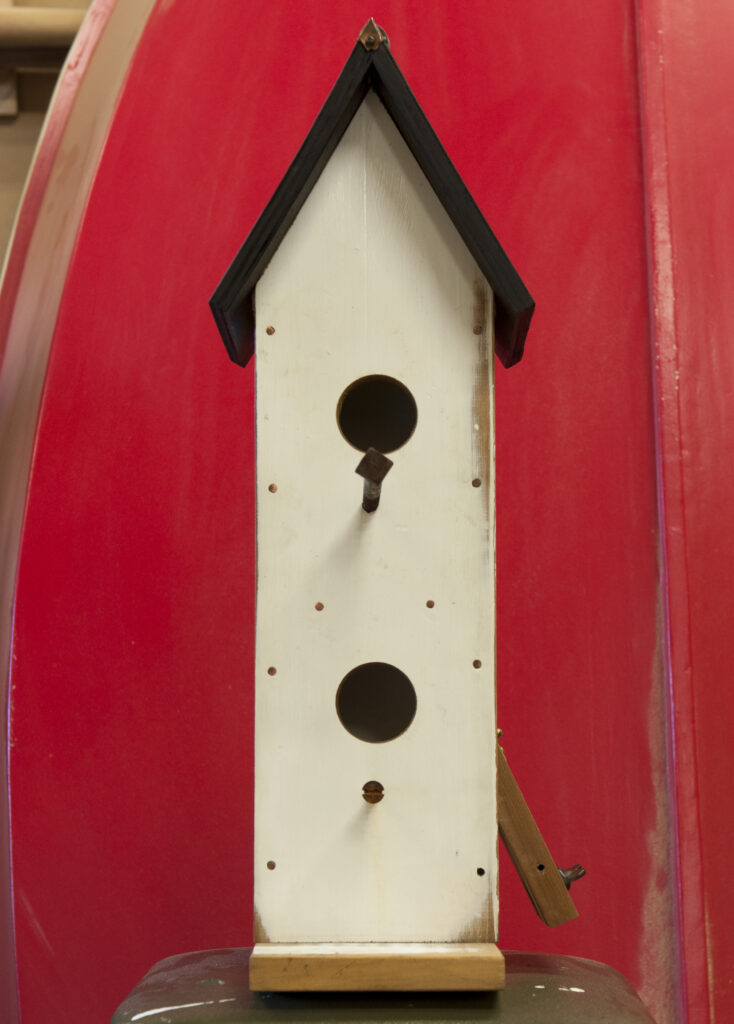
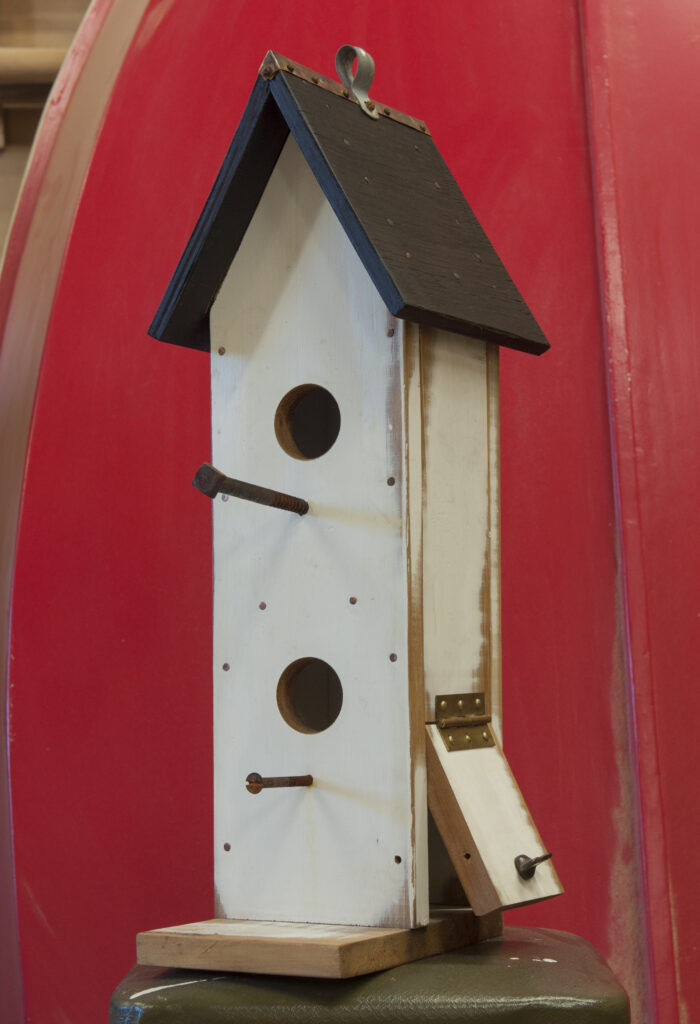
“Word got around and women in the community wanted to come along too”
A lot of support for this shed
Since 2015, the Redcliffs Community Shed has been run by a management committee as a charitable trust.Lotteries’ money pays the rent, the Community Organisation Grants Scheme (COGS) covers administration, power and insurance, and quake recovery funding helped set up a lot of the machinery. “Everyone loves a community project,” says treasurer Cam Holdaway.
The shed’s 60-70 members pay an annual sub of just $25.“We don’t need much money to operate. We’re almost self-funding,” he says. Local sponsors help out too, including Spark, who installed the internet, Mitre 10, and the New World supermarket across the road, which sends over food for Shed get-togethers and the annual working bee.
The community shed is open on Mondays, Wednesdays and Fridays from 10am-2pm, and Wednesday nights until about 9pm. “It’s become a local meeting place,” says Cam. “We’ve got a structure in place to ensure there are people able to look after the machinery and the building so people like Megan can come and learn and enjoy making things.”
Friday tends to be arts and crafts day, with Redcliffs School parents coming along in the morning to make things for the annual school fair. A lot of elderly people who live alone come down, too. “They not only have a lot to offer in terms of skills, but quite a few have donated their gear.”
And, of course, the common room area includes a shelf packed with folders of well-thumbed Shed magazines. “They’re brilliant,” says Cam.
